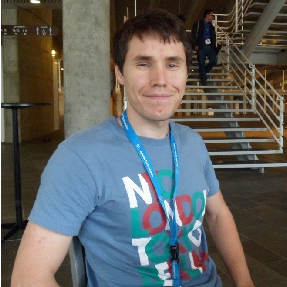A member of International Scientific and Research Centre for Theoretical Materials Science (ISRCTMS) at Samara University Evgeny Aleksandrov has won the grant from the Russian Fund for Basic Research (RFBR) and the Royal Society of London for the Improvement of Natural Knowledge (the Royal Society); in cooperation with Dr. Matthew Addicoat (Nottingham Trent University, the UK), he will develop computer-aided design tools of new microporous materials.
The project “Theory and methods of combined topological and quantum chemical prediction of anisotropy of mechanical properties of microporous wireframe materials” has been ranked among 13 winners, according to an expert opinion, given independently by both Russian and British sides. In total, there were 81 applications submitted for the contest.
Within the limits of the project, it is planned to develop world’s first combined approaches to modeling of mechanical properties of microporous compounds by the example of metal-organic and covalent organic frameworks. Practical application of microporous materials is extraordinary wide owing to their peculiar structure, high deformability, and other properties. Various filtering techniques, including identification and extraction of complex mixtures components, and the ability to control capturing selectivity of toxic substances and contaminants; adsorption, which includes the control over the kinetics of adsorbed drugs dissolution; efficient gaseous materials storage, such as fuel; adsorption of heat, mechanical power, and electromagnetic radiation – this is only a short list of applications of mechanical properties of microporous wireframe materials.
“We are planning to develop software correlation search tools between chemical composition, structural and mechanical properties of the frameworks; the correlations found are to be included in the database, comments Evgeny Aleksandrov. On the basis of the correlations found and the AuToGraFs program, created previously by English colleagues, the computer-aided design tools of new microporous materials will be developed for the first time”.
“This is a notable victory for the ISRCTMS, convinced Professor Vladislav Blatov. For the first time, we have won the international grant, and, now, the researches we conduct will be partially financed by the foreign fund. Besides, this is a first victory of our young member’s project in an “adult” competition in a highly competitive environment – it was solely every sixth application that won. It is also crucial that the expected outcomes give a considerable momentum to design development – we are planning to join both our and British experience and to develop a fundamentally new constructor of porous metal-organic compounds, which will be in demand in experimental laboratories. The project will favour the establishment of close scientific communications between the ISRCTMS and Nottingham University”.
The database developed as well as the software will be available to the public on the website.
Valeria Ivanova
